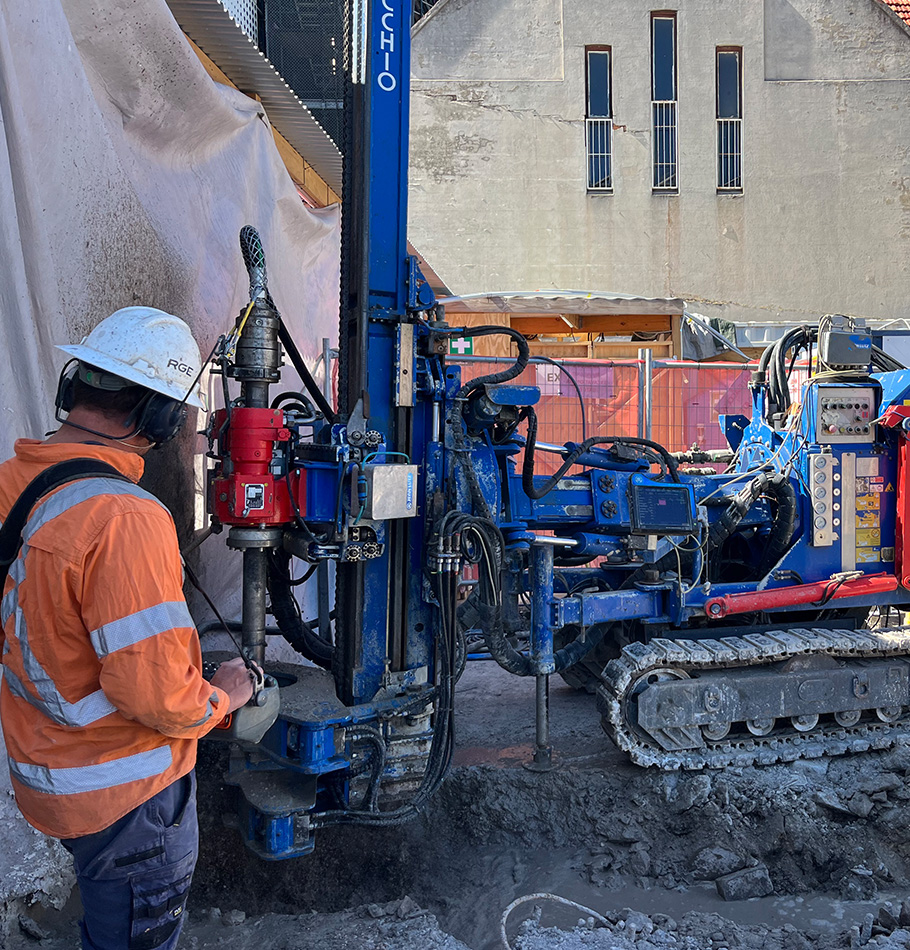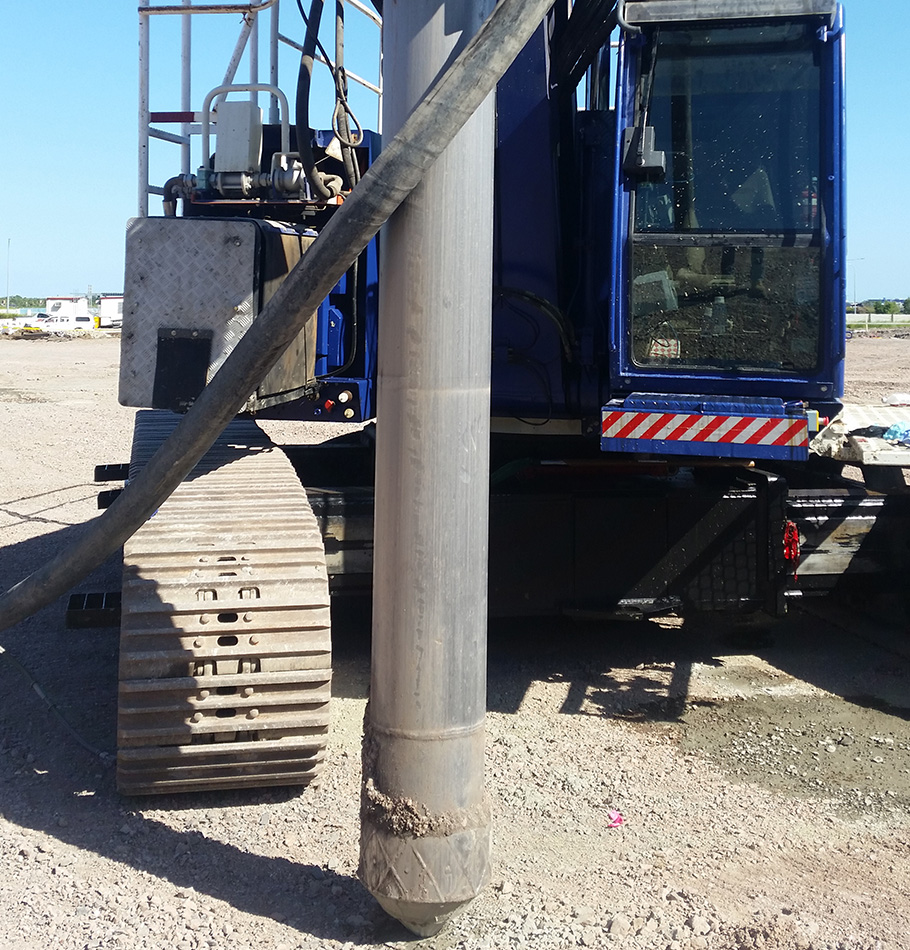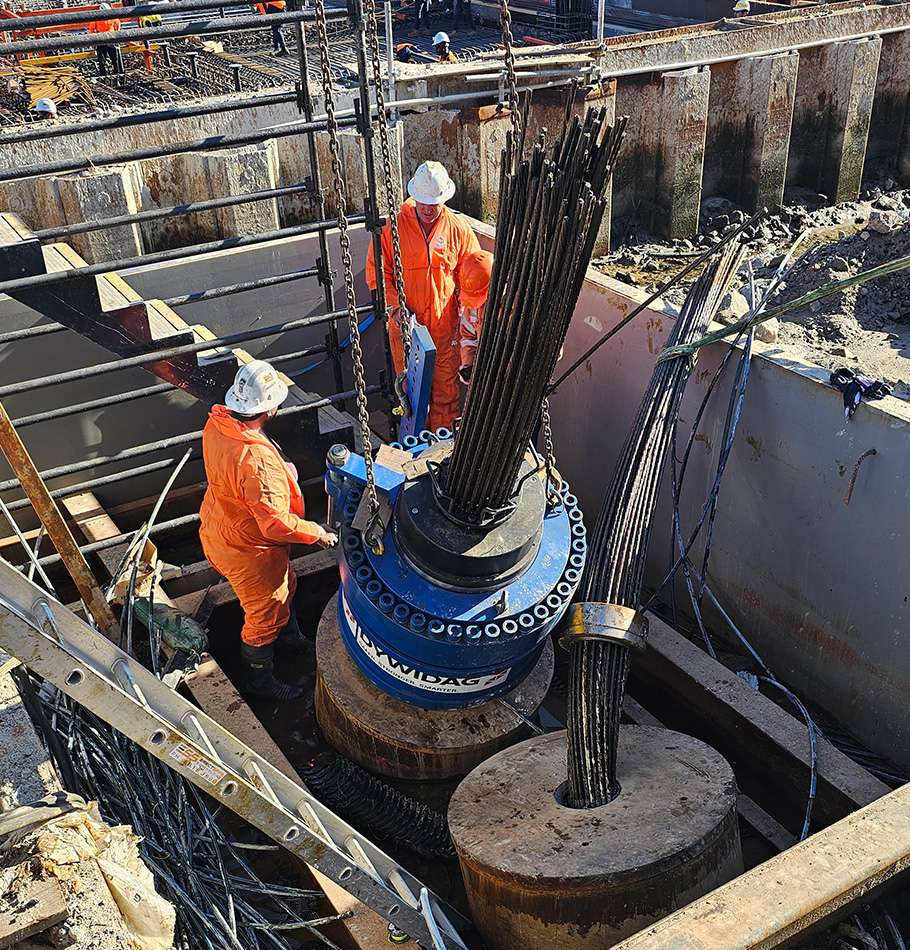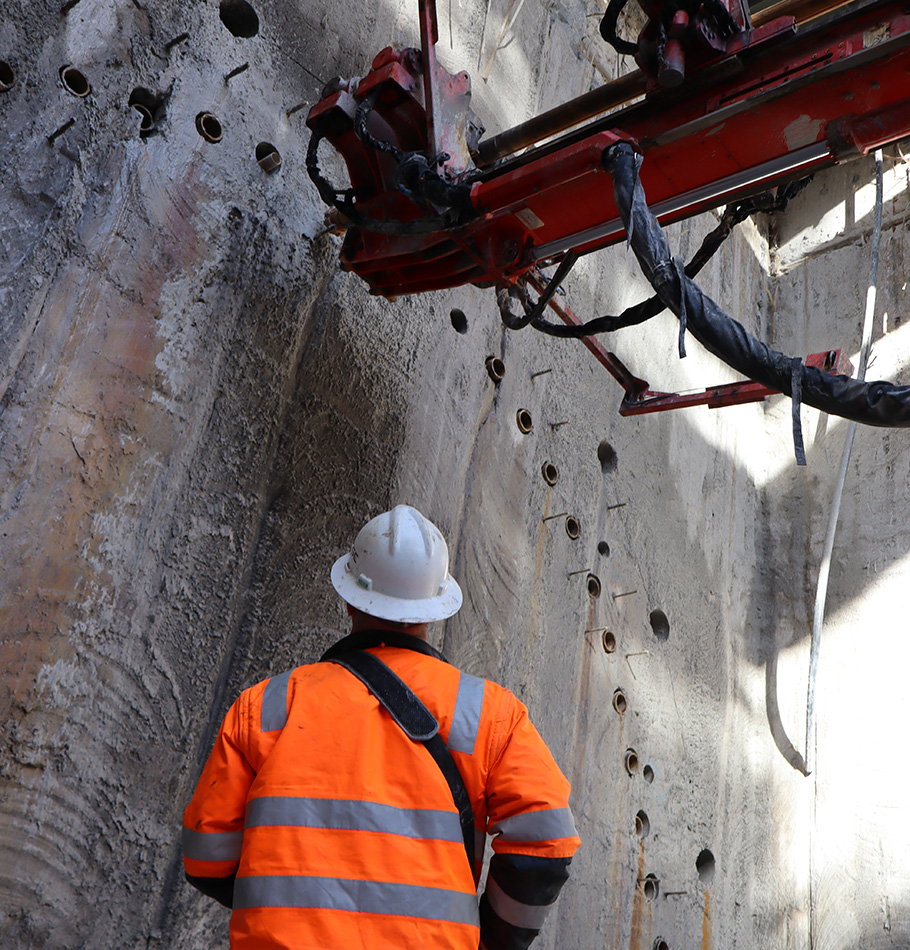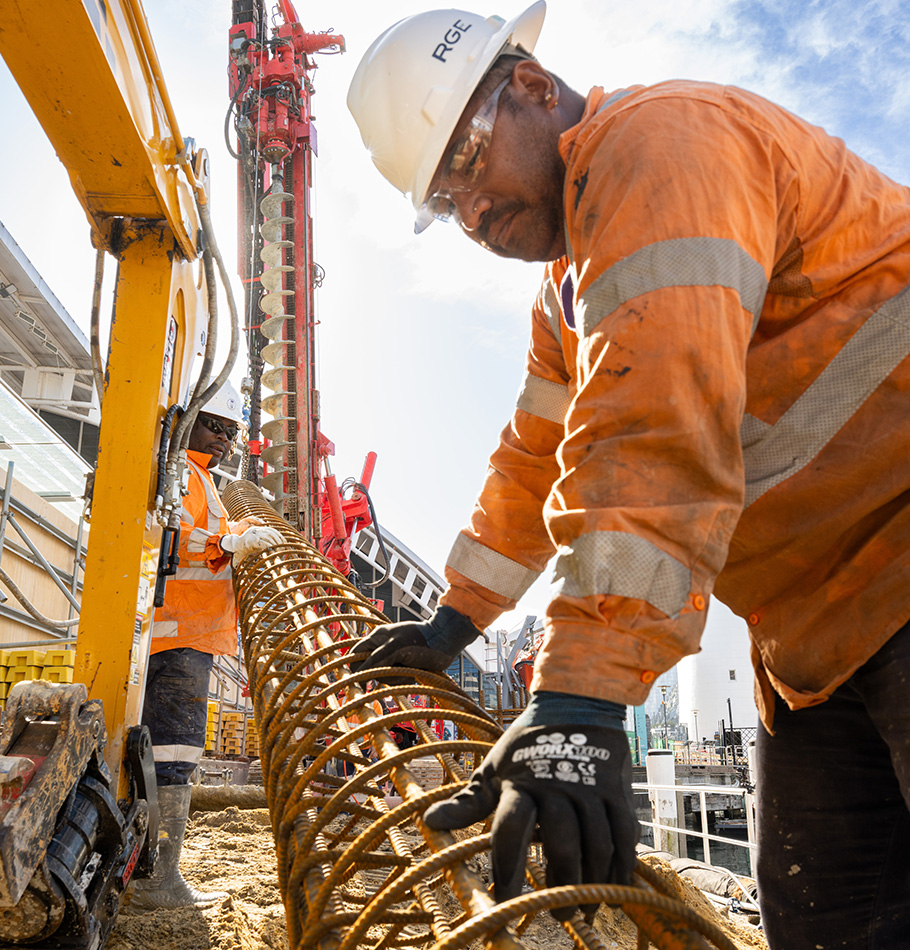In-situ Soil Mixing
Overview
Converting soft soils to high strength material and immobilisation of contaminants
Soil mixing is used to increase strength, decrease settlement and reduce permeability of soft or weak soils. Compared with other ground improvement techniques, a key benefit of this in situ process is that ground improvement takes place within hours/days rather than weeks/months.
At RGE, we can deliver various specialised services, such as wet, dry, mass, shallow and deep soil mixing techniques. Our equipment is among the most modern in Australia, including automated batch plant, real-time GPS control and data logging of the mixing operation.

Key Attributes
- Increases soil strength and reduces permeability and settlement
- Quick ground improvement method
- Creates groundwater flow barriers
- Reduces contaminant interaction and leaching
- Suitable for various soils, including contaminated soils
- Ideal for temporary working platforms and roadways
- Low environmental impact as soft and contaminated soils are treated in-situ
- Cost-effective and customizable to project needs
- Permanent solution
Strengthen and stabilise the ground with soil mixing
Our in situ soil mixing process transforms weak or unstable ground into a dense, durable, and low-permeability mass for construction or environmental remediation.
Depending on the project, this approach can form overlapping columns, continuous walls, or large treated blocks, making it a highly versatile technique. Specialised augers and mixing tools cut into the soil, breaking it up while simultaneously injecting and blending a cementitious binder.
Whether stabilising deep foundations, creating groundwater cut-off barriers, or treating contaminated ground, mixing offers a fast, reliable, and environmentally responsible way to improve soil conditions without excavation.
The result is a strengthened soil profile that can support heavy loads, resist settlement, and control groundwater movement.
Frequently asked questions
When is this ground improvement recommended?
Soil mixing for ground improvement is recommended whenever weak, soft, or unstable soils need to be strengthened and stabilised without excavation.
It is used to bolster the ground beneath structures, increase load-bearing capacity, and reduce the risk of settlement.
Engineers also use it to control liquefaction risk in seismic zones, stabilise slopes, reduce pressure behind retaining walls, and create groundwater barriers.
As this method can be used to soil mix columns, panels, or fully stabilised zones, it adapts to a wide range of design needs. Binder type and dosage are selected based on the soil profile, ensuring a solution that is efficient, durable, and cost-effective.
At what depths is soil mixed?
Mixing can be carried out at both shallow and deep levels, depending on the project.
- Shallow soil mixing: generally up to 5–6 metres, often used for road pavements, slabs, and shallow foundations.
- Deep soil mixing: typically 6–30 metres, but can extend to 50 metres or more with specialised rigs. DSM is used for foundations, groundwater barriers, liquefaction control, and large infrastructure works.
The treatment depth is determined by site conditions and the performance required from the improved ground.
What is deep soil mixing?
Deep soil mixing (DSM) is a ground improvement technique that blends soil in place with a cementitious slurry. Using large augers or mixing shafts, DSM forms reinforced soil columns — often between 0.8 m and 2.5 m in diameter — that extend to depths of 30–80 m.
DSM is applied to increase soil strength, control settlement, and mitigate liquefaction. It is also widely used for groundwater cut-off walls and for containing contaminated soils.
By treating large soil volumes quickly, DSM provides a cost-effective way to deliver long-term stability on major infrastructure and remediation projects.
What is mass soil mixing?
Mass soil mixing (MSM) is a ground improvement technique designed to stabilise wide areas of soft or contaminated soil. Instead of creating individual columns, the ground is treated in blocks or “cells,” usually to depths of 5–6 m, producing a continuous, reinforced mass.
MSM is often used to provide working platforms, reduce settlement, improve stability, or contain contaminants such as acid sulphate soils. It is a quiet, low-vibration technique that generates very little spoil, making it both economical and environmentally responsible.
MSM is particularly effective for shallow ground improvement where deep foundations are not required.
What is wet versus dry soil mixing?
The main difference between wet and dry mixing is how the binder is introduced into the ground:
- Wet soil mixing: a cement slurry or similar liquid is injected during mixing. This method suits cohesive soils and projects requiring continuous walls or large-diameter columns.
- Dry soil mixing: powdered binders such as cement or lime are blown into the soil with compressed air. It works best in soft, moisture-rich soils like clay or peat.
Both approaches improve soil strength, stability, and permeability while minimising spoil and vibration. The choice depends on soil characteristics, groundwater levels, and project requirements.
Enquire now to discover which technique may be more suitable for your site.
How does a soil mixer work?
A soil mixer uses augers, blades, or rotary tools to cut into the ground while injecting a binder. As the tool penetrates and withdraws, it breaks up the soil and thoroughly blends it with the binder, forming a dense and stable mass.
The binder dosage and mixing speed are adjusted to suit the soil type and engineering specifications. This precise control ensures that the treated ground achieves the required strength, stiffness, and durability.
How much do soil mixing services cost?
Service costs vary with soil type, treatment depth, site size, and binder requirements. In most cases, it is more economical than excavation and replacement because it improves the soil directly in place with minimal spoil.
For an accurate cost estimate, a site investigation and project assessment are essential. Enquire now to discuss the costs for your site.
Do you service Australia-wide?
Yes. Our soil mixing company operates across Australia, including Sydney, Brisbane, Melbourne, Perth, and regional centres. We have experience with wet, dry, mass, shallow, and deep soil mixing, tailoring solutions to local conditions and project needs.
Enquire now to arrange ground improvement services anywhere in Australia.
Contact RIX Ground Engineering
Our excellent technical and operational knowledge allows us to tailor make solutions that give our clients the combination of cost, time and quality that best fits their requirements.
Contact the team at RIX Ground Engineering (RGE)
RGE is part of the family of RIX companies offering specialist geotechnical services across Australia and New Zealand. Our resources include over 50 major items of plant and 400 employees.
We are unique in the comprehensive range of services we provide, including ground engineering, ground improvement, shotcrete, retaining walls, piling, slope stabilisation, rope access asset maintenance, mining, tunnelling, demolition, and earthworks.
